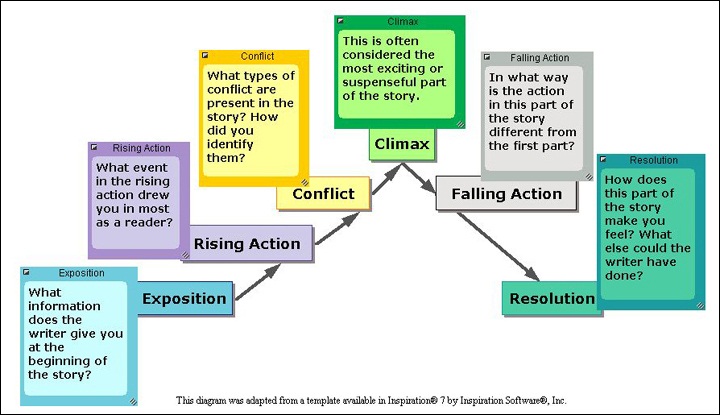Storytelling Through Computer Animation
Assignment A15: on Events, Interactivity, and parameters
Objectives- Focus on plot development
- Practice using events to add interactivity to your stories.
- Practice using parameters
Story, Plot, and Plot Components
This is a course on storytelling. Granted, the storytelling is through animation, but the story is of crucial importance, and a story will not be engaging if it is not purposeful.
The Goal(s) and Purpose(s) of your Story
In the book Science Fiction Writer's Workshop Barry B. Longyear's asks:
"What
are you trying to accomplish with your story? What is its moral or
theme? Is it to demonstrate the worth of a particular brand of
morality, to point the way toward the future, to deplore a certain
ideology or form of social organization? The story is a lie, but the
lie must accomplish something besides simply being believed. It must
excite, teach, enlighten, stir to action, soothe, uplift, depress,
sadden, bring happiness--something. Otherwise, there is no point in
telling it. And what that purpose is may or may not be your choice. In
making up a story, the tale's purpose is not necessarily the starting
point. You may not even know the purpose until after you have finished
inventing the tale. But there must be a purpose. Without a purpose--or
without a purpose of significance--the story becomes trivial."
So, in this assignment, your first task is to decide upon your purpose and goals as a storyteller.
What is the difference between plot and story?
In Technique in Fiction, Macauley and Lanning draw a helpful distinction between story and plot. A story is a sequence of events prompted by the question, “And then what happened?” whereas a plot contains events causally linked to each other, prompting the question, “Why?”
So, then a story is built upon the conflicts created by the plot, while the plot is a series of events deliberately arranged so as to reveal their dramatic, thematic, and emotional significance.
Without a plot line there is no story, and some might say, you have merely a random series of events, which are at best loosely associated by the fact that most of them involve many of the same main characters. Not every plot has a great story, but every great story has a plot, and this plot must be planned based upon your purpose(s) and goal(s) as the artist/storyteller. It is this plan the characters follows toward an anticipated resolution, and it is this plan the artist follows to relate the character's journey to the audience.
Primary Components of Plot
The following are generally accepted as the primary components of a plot line:
- Exposition: the beginning of the story, establishment of setting and characters
- Conflict: the problem(s) faced by the characters
- Rising Action: events in the story leading up to the climax
- Climax: the culmination of events in the story, point of highest reader interest
- Falling Action: events leading to the solving of the story’s problems
- Resolution: how events and problems of the story are solved

Here is a classic story with a rather sophisticated internal plot. Let's analyze it.
The Telltale Heart by Edgar Allan Poe
Next create a longer animation which incorporates all of these elements you have planned for in your artist's statement.
We know that interactive stories are stories in which readers are given choices which determine the direction of the rest of the plot line.
Remember the story of the unwelcome visitor?
The frogs show the "group behavior" of jumping into the pond to escape the snake. Instead of having this story run with a group behavior, we could have the reader click on each snake to help them escape. To do this, we could use method with a parameter...
But, we also need to work this into the longer plot in a way which makes sense.
Your task: (which is to be completed individually, though consultations are encouraged...)
In this assignment, we will create a longer animation and really focus on story purpose and goals, plot development, and will also gain practice parameters and interactivity.
Create an artist's statement as
follows:
- Storytelling:
- Story Purposes and Goals:
Using Barry B. Longyear's quote as a guide, compose 3-5 sentences
describing the primary goals and purpose of your story.
Then identify each of the following with 1-3 sentences each. - Exposition: the beginning of the story, establishment of setting and characters
- Conflict: the problem(s) faced by the characters
- Rising Action: events in the story leading up to the climax
- Climax: the culmination of events in the story, point of highest reader interest
- Falling Action: events leading to the solving of the story’s problems
- Resolution: how events and problems of the story are solved.
- Technical
- What choice(s) does the viewer need to make, and how will they know how to communicate their choice?
- How is the parameter used to assist with this choice?
- How successful do you feel that you were in conveying creating alternative plot lines? Explain.
- Create this world-level method which uses the parameter.
- Add comment lines to this method, indicating what you did and why
Submit two files: the Alice scene yourusername-A15 and the artist's statement yourusername-A15 to Moodle before class.